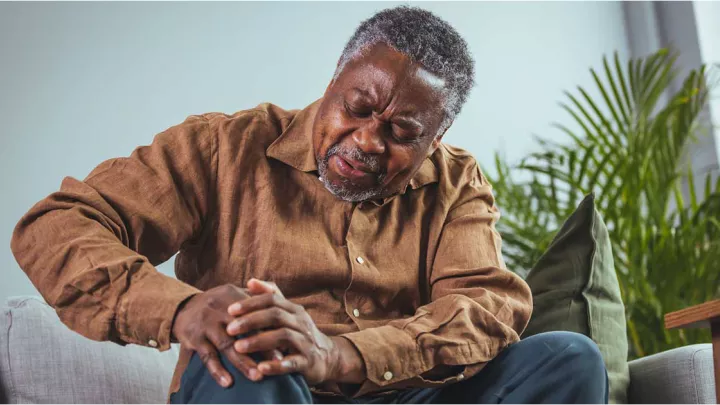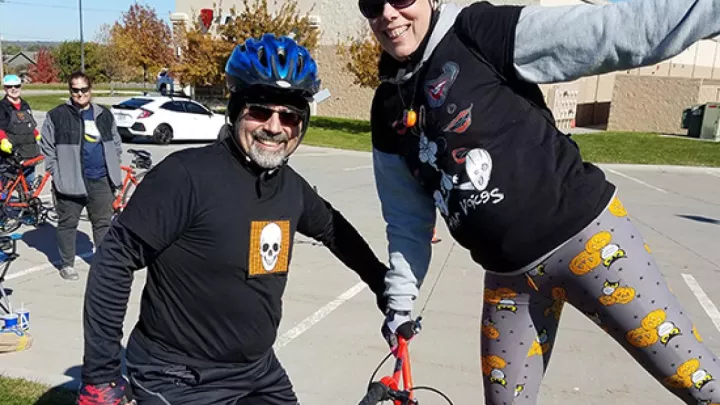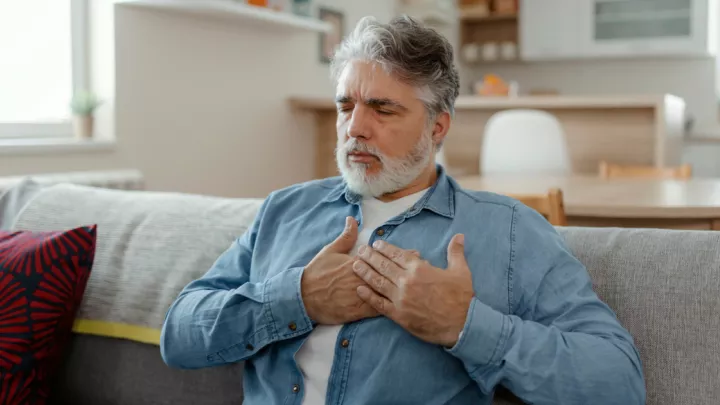10 tips to manage joint pain

As we age, aches and pains seem to increase. This is especially true in the joints. In some cases, joint pain can restrict your activity and prevent you from living an active lifestyle. If you have chronic joint pain, it is important to get it evaluated so your doctor can help you treat or better manage the pain.
Joint pain can be caused by a variety of causes. Some of the most common causes include:
- Underlying osteoarthritis.
- Twisting, strain or other injury to a joint.
- Traumatic injury.
Osteoarthritis
“The older the person, the more likely joint pain is related to osteoarthritis, a breakdown of cartilage in the joints due to daily wear and tear,” says Beau Kildow, MD, Nebraska Medicine orthopaedic surgeon.
Degeneration of the joints caused by osteoarthritis leads to pain, stiffness and inflammation. It is one of the most common chronic diseases, says Dr. Kildow. Osteoarthritis can affect any joint of the body but most commonly occurs in the hands, knees, hips, lower back and neck. A prior injury to a joint, such as the knee or shoulder, can predispose you to developing joint pain later in life.
“Unfortunately, there is no cure for osteoarthritis, there is no way to prevent it, nor can we completely stop the progression,” says Dr. Kildow. “But there are things we can do to manage the pain.”
Joint pain and inflammation can also be due to a recent injury. “Any chronic joint pain that persists for two weeks or more should be evaluated by a medical professional,” recommends Dr. Kildow. “Severe pain in a joint should be evaluated right away.”
Diagnosing joint pain
Diagnosing joint pain can usually be attained through an X-ray, which can show narrowing of the joint spaces, degeneration of cartilage or a fracture. “If we suspect there has been an acute injury, an MRI may be recommended to get more detailed images of the joints and tissues,” Dr. Kildow says. “An injury to the tendons or cartilage will require further evaluation and may need physical therapy and/or surgery.”
Tips to manage joint pain
If your pain is due to osteoarthritis, Dr. Kildow recommends the following to help relieve pain and inflammation:
- Rest the joint if the pain and inflammation have flared up.
- Ice the joint.
- Use nonsteroidal anti-inflammatory drugs (NSAIDs) to help reduce pain and inflammation.
- Apply nonsteroidal anti-inflammatory creams directly to the joint.
- Engage in regular exercise that includes strengthening and stretching.
- Maintain proper body weight to relieve stress on the joints.
- Consider corticosteroid injections to reduce inflammation and pain if other measures fail.
- Explore nerve stimulation treatments around the joint to decrease pain signals to the brain.
- Adopt an anti-inflammatory diet.
Contrary to what you might think, exercise does not cause arthritis, says Dr. Kildow. Even if you have arthritis, it is important to continue exercise that include both strengthening and stretching, as well as low-impact exercise like walking, bicycling and water exercise to help keep your joints mobile, notes Dr. Kildow. Weight training can help strengthen muscles around the joints to provide support and reduce stress. Strenuous or repetitive exercise that affects the arthritic joints, however, may worsen pain and inflammation and should be avoided if pain increases.
While corticosteroid injections can be very effective in relieving pain, they typically last about a few months and should not be administered to the same joint more than three four times in a year. Overuse of the shots can cause more damage to the joint. If pain continues and becomes severe, joint replacement may be recommended as a final option for end-stage arthritis.
Glucosamine chondroitin is a supplement that some people have found to be helpful in reducing joint pain. Chondroitin and glucosamine are components of the cartilage that help it retain water and stay lubricated. While studies have not conclusively shown substantial benefits from this supplement, there is no harm to my knowledge in trying it, says Dr. Kildow.
Dr. Kildow recommends using caution when considering therapies that you may see promoted online, such as stem cell injections, red light therapy, gel injections and acupuncture. “There is no scientific data that supports any of these therapies,” says Dr. Kildow.
Anti-inflammatory diet
An anti-inflammatory diet may help reduce chronic inflammation throughout the body, including your joints. To follow an anti-inflammatory diet, avoid eating the following:
- Foods high in sugar.
- Fried foods.
- Foods high in saturated fats, like fast food, red meat, full-fat dairy and whole milk.
- Processed and packaged foods like crackers, chips and cookies.
- Foods high in sodium, including many soups and snack foods.
Foods that reduce inflammation
Replace high sugar, fatty and processed foods with options that may help reduce chronic inflammation. By eating more of these foods, you will also reduce your consumption of refined sugars and processed foods, which will benefit your overall health. These include:
- Wild caught fish.
- Spices like turmeric and ginger.
- Garlic.
- Vegetables.
- Seeds and nuts, like walnuts.
- Fruits.
- Beans.
- Whole, unprocessed grains.
- Unprocessed olive oil.
Today, no one needs to live with chronic pain, says Dr. Kildow. If chronic pain is impacting your lifestyle, talk to your doctor to get a diagnosis and determine what treatments or lifestyle changes can help you live healthier and do the things you enjoy most.
Don't let joint pain limit your activity level. Make an appointment with one of our doctors for an evaluation by scheduling online or calling 800.922.0000.







